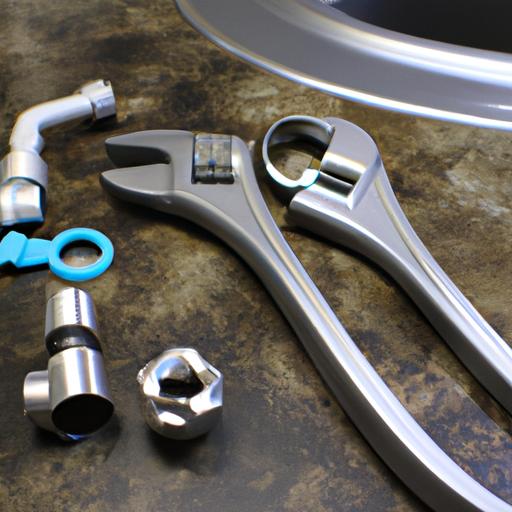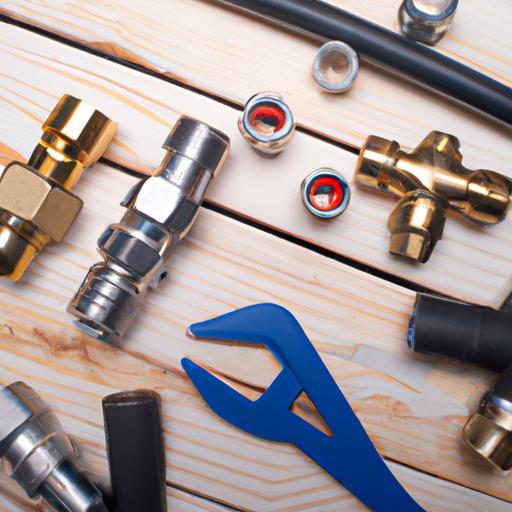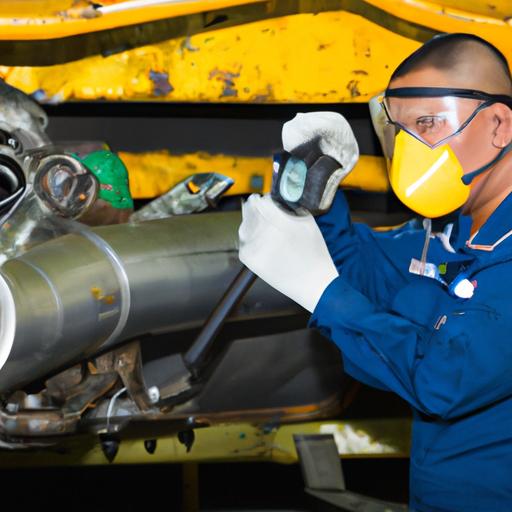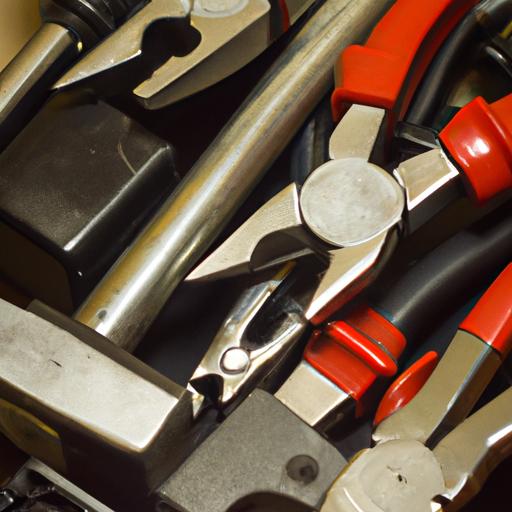As homeowners, we often encounter plumbing issues under the sink that can quickly turn a peaceful day into a chaotic mess. Leaky pipes, clogged drains, and malfunctioning fixtures can disrupt the smooth functioning of our homes and dampen our spirits. But fear not! With the right set of under sink plumbing tools at your disposal, you can tackle these challenges head-on and restore harmony to your plumbing system.
A. Importance of under sink plumbing tools
Have you ever found yourself knee-deep in water, desperately trying to fix a leaky pipe under the sink? If so, you know the importance of having the right tools within reach. Under sink plumbing tools are specifically designed to address the unique challenges that arise in this confined space. From tightening loose connections to unclogging stubborn drains, these tools empower you to take control of your plumbing repairs.
B. Overview of common plumbing issues under the sink
Before we dive into the world of under sink plumbing tools, let’s familiarize ourselves with the typical plumbing issues that plague this area. Leaks, drips, and puddles are often caused by worn-out seals, loose connections, or damaged pipes. Additionally, clogged drains can result from a buildup of grease, food particles, or foreign objects. Understanding these common problems will help you identify the right tool for the job and save both time and money.
C. Role of under sink plumbing tools in resolving these issues
Under sink plumbing tools are the unsung heroes of our homes, quietly awaiting their moment to shine. These tools come in various forms, including wrenches, plungers, augers, pipe cutters, and pliers, each serving a specific purpose in addressing different plumbing issues. Whether you need to tighten a loose fitting, clear a stubborn clog, or replace a faulty pipe, these tools provide the leverage and precision necessary to get the job done efficiently.
So, the next time your sink decides to cause a commotion, remember that under sink plumbing tools are your trusted companions. With their assistance, you can conquer any plumbing challenge that comes your way, ensuring a smoothly functioning and leak-free home.
Stay tuned for the next sections, where we will explore the various types of under sink plumbing tools and provide guidance on choosing the right tool for your specific needs.
Types of Under Sink Plumbing Tools
When it comes to tackling plumbing issues under the sink, having the right tools at your disposal is essential. Let’s explore the different types of under sink plumbing tools that can help you swiftly and effectively resolve common problems.
A. Wrenches
Wrenches are a staple in any plumber’s arsenal, and under sink plumbing is no exception. These versatile tools provide the leverage needed to tighten or loosen various fittings and connections. Here are two commonly used wrenches for under sink repairs:
1. Adjustable Wrench
An adjustable wrench, also known as a crescent wrench, is a must-have tool for any DIY enthusiast. Its adjustable jaw allows it to fit different sizes of nuts and bolts, making it ideal for working with various plumbing fixtures under the sink. With its firm grip and ease of use, an adjustable wrench is a reliable companion for any plumbing task.
2. Pipe Wrench
For those stubborn, hard-to-reach pipe connections, a pipe wrench comes to the rescue. This heavy-duty tool features serrated jaws that offer a tight grip on pipes, making it easier to loosen or tighten them. With its exceptional strength and maneuverability, a pipe wrench is perfect for tackling those challenging under sink plumbing repairs.
B. Plungers
When a clogged drain is causing you headaches, a plunger is your go-to tool. Under sink plungers, also known as sink plungers or cup plungers, are specifically designed to fit in the tight space beneath your sink. With a few powerful plunges, you can dislodge blockages and restore proper drainage.
C. Augers
When a plunger fails to clear a stubborn clog, an auger, also known as a plumbing snake, steps in. This flexible tool is designed to navigate through pipes, breaking up and removing clogs that are beyond the reach of plungers. Augers come in various sizes, including handheld manual augers and drill-powered augers, providing you with options to suit your needs.
D. Pipe Cutters
Sometimes, a plumbing issue under the sink requires the replacement of a damaged pipe. In such cases, a pipe cutter becomes invaluable. This tool enables you to make clean, precise cuts on pipes, ensuring a snug fit for the replacement piece. With a pipe cutter, you can confidently tackle pipe repairs and replacements.
E. Pliers
Last but not least, pliers are indispensable for various under sink plumbing tasks. From gripping and holding pipes to tightening or loosening small fittings, pliers offer the necessary dexterity and grip. Adjustable or slip-joint pliers are particularly useful under the sink, providing versatility for multiple tasks.
With these types of under sink plumbing tools at your disposal, you’ll be well-equipped to handle a wide range of plumbing issues. Stay tuned for the upcoming sections, where we’ll dive deeper into how to choose the right under sink plumbing tools and provide a step-by-step guide on their usage.
Step-by-Step Guide on Using Under Sink Plumbing Tools
When faced with a plumbing issue under the sink, it’s essential to approach the task in a systematic manner. By following a step-by-step guide, you can navigate the repair process with confidence and ensure a successful outcome. Let’s delve into the stages involved in using under sink plumbing tools effectively.
A. Identification of the problem
The first step in any plumbing repair is identifying the root cause of the issue. Is it a leaky pipe, a clogged drain, or a malfunctioning fixture? By carefully inspecting the area under the sink, you can pinpoint the problem and determine the necessary course of action.
B. Preparing the workspace
Before diving into the repair, it’s crucial to prepare the workspace for optimal efficiency. Clear out any clutter or obstructions that may hinder your access to the plumbing components. Lay down a protective mat or towel to catch any potential drips or spills, keeping your work area clean and organized.
C. Selecting the appropriate tool for the job
Armed with knowledge about the plumbing issue, it’s time to select the right tool for the task at hand. Referencing the previously mentioned types of under sink plumbing tools, choose the one that best aligns with your specific repair needs. Remember, each tool serves a distinct purpose, so make an informed decision to maximize your chances of success.
D. Executing the necessary repairs
With the appropriate tool in hand, it’s time to put your skills to the test. Follow the instructions provided with the tool and apply the necessary techniques to address the plumbing issue. Whether it’s tightening a loose connection, clearing a clog, or replacing a damaged pipe, proceed with caution and precision.
E. Testing the repaired plumbing system
After completing the repairs, it’s vital to test the functionality of your newly restored plumbing system. Turn on the water supply and observe for any signs of leaks, drips, or irregularities. Run the faucet and check the drain to ensure proper water flow. By conducting these tests, you can verify the effectiveness of your repair and make any necessary adjustments if required.
With this step-by-step guide, you can confidently utilize under sink plumbing tools to tackle various plumbing issues. Stay tuned for the upcoming sections, where we will explore safety precautions and offer a compelling conclusion to this informative article.
Safety Precautions: Ensuring a Smooth and Injury-Free Under Sink Plumbing Experience
When it comes to plumbing repairs under the sink, safety should always be a top priority. While under sink plumbing tools empower us to tackle various issues, it is crucial to take necessary precautions to protect ourselves and prevent any mishaps. By following some simple yet essential safety measures, you can confidently handle your plumbing repairs without any unnecessary risks or injuries.
A. Wearing appropriate protective gear
Before diving into any plumbing task, it’s essential to equip yourself with the right protective gear. Gloves can shield your hands from sharp edges, chemicals, and potential contaminants. Additionally, safety glasses or goggles will protect your eyes from any debris or splashing water. By wearing the appropriate gear, you can minimize the risk of accidents and ensure a safer working environment.
B. Turning off water supply
One crucial step to take before starting any under sink plumbing work is to turn off the water supply. This prevents any unexpected water flow that could lead to flooding or further damage. Locate the shut-off valves under the sink or, if necessary, shut off the main water supply to your home. By taking this precautionary measure, you can work on your plumbing system without worrying about any unwanted surprises.
C. Ensuring proper ventilation
Working under the sink can expose you to potentially harmful fumes and chemicals. To maintain a safe environment, ensure proper ventilation by opening windows or using fans to circulate fresh air. Adequate ventilation helps minimize the inhalation of toxic substances and improves air quality, keeping you safe and comfortable during your plumbing repairs.
D. Handling tools with care to avoid injuries
Under sink plumbing tools can be sharp, heavy, or have moving parts, which can pose a risk if mishandled. Always handle your tools with care, ensuring a firm grip and using them for their intended purposes. Avoid using excessive force or applying tools to materials they are not designed to handle. By using tools correctly and responsibly, you can prevent accidents and injuries during your plumbing endeavors.
By following these safety precautions, you can confidently tackle under sink plumbing repairs, knowing that you have taken the necessary steps to protect yourself and your home. Remember, safety is paramount, and it’s better to take the extra time and precautions than to risk an accident. Stay safe and enjoy a hassle-free plumbing experience!
Stay tuned for the next sections, where we will provide a step-by-step guide on using under sink plumbing tools and offer insights on maintaining your plumbing system.
Conclusion
In conclusion, under sink plumbing tools are indispensable allies in tackling common plumbing issues that arise beneath our sinks. By understanding the importance of these tools, familiarizing ourselves with the typical problems encountered, and selecting the right tools, we can become confident DIY plumbers within our own homes.
Throughout this article, we have explored the significance of under sink plumbing tools in resolving plumbing challenges. From leaky pipes to clogged drains, these tools provide the necessary leverage, precision, and efficiency to restore order to our plumbing systems.
Remember, when selecting the right under sink plumbing tools, consider the specific plumbing issue at hand. Understanding the problem will guide you in determining which tools are necessary for the job. Additionally, considering the type of pipes used in your plumbing system is crucial, as different tools may be required for different pipe materials.
Furthermore, evaluate the quality and durability of the tools you choose. Investing in high-quality tools will not only ensure successful repairs but also save you from frequent replacements down the line. However, it is essential to keep budget considerations in mind as well. Seek a balance between quality and affordability to make the most practical choice for your needs.
By following these guidelines and armed with the right under sink plumbing tools, you can confidently tackle plumbing issues and maintain a smoothly functioning plumbing system in your home.
So, the next time a leak or clog threatens your peace, don’t fret. Embrace the challenge, equip yourself with the right tools, and take charge of your under sink plumbing repairs.
Thank you for joining me on this journey to discover the power of under sink plumbing tools. Remember to stay proactive and perform regular maintenance to prevent plumbing issues before they arise. Happy plumbing!



